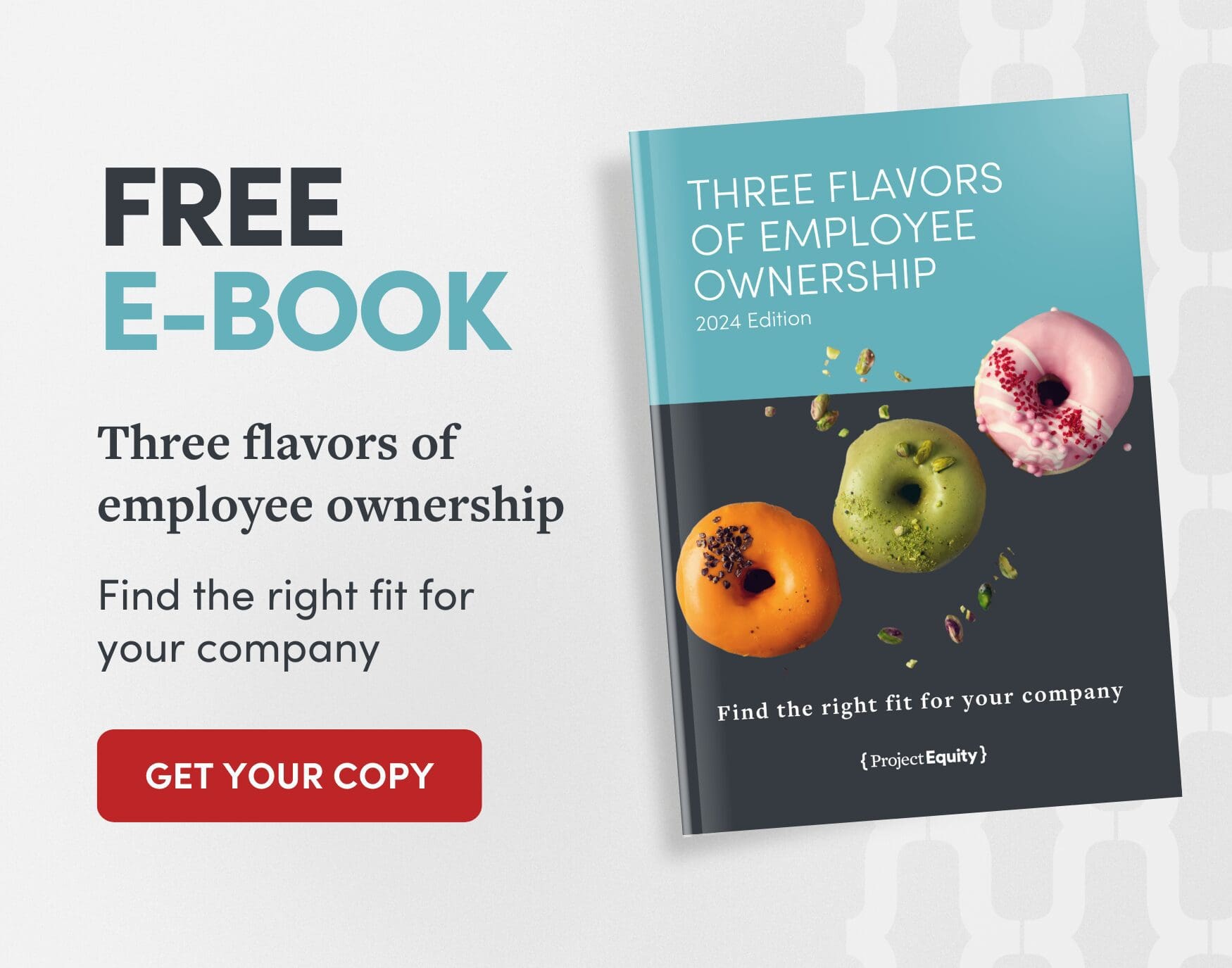When is a business a good fit for an ESOP transition?
- Stacey Smith
What is an ESOP?
ESOPs are qualified retirement plans similar to 401(k)s except they’re primarily invested in the equity of the business. They are free to employees, offer compelling tax advantages and provide long-term wealth-building opportunities for employee-owners. That’s why companies like Delta Pipeline (whose employees are featured in the photo above) have chosen to become ESOPs.
An ESOP is a powerful and appealing business structure that’s suited to businesses of a certain size. Since ESOPs come with significant tax and employee-owner benefits, they’re highly regulated by the Department of Labor (DOL) and the Internal Revenue Service (IRS). As such, they also come with more significant setup and ongoing maintenance costs.
Nine ESOP readiness factors
When is a business well-suited to transition to an ESOP?
Whether you’re a business owner considering transitioning your business to an ESOP or a business advisor with clients who are interested in this type of EO, this guide is for you.
1. Employee headcount: 40+ staff
In Project Equity’s work, we’ve found that ESOPs are advisable for companies with 40 employees or more to justify the expenses, costs and processes to set up and run an ESOP.
2. Financial capacity: can afford setup costs
ESOPs are more expensive than other types of EO, and setup costs can vary. Typically, they will be at least $250,000 and often far more.
3. Profitability: $750k EBITDA
ESOPs are better suited to companies with strong, stable or growing profits. This is to ensure that not only can setup costs be borne by the business, but that the ongoing maintenance of an ESOP and ability to fund future repurchase obligations are possible.
4. Strong operational infrastructure
Because ESOPs are so highly regulated by the DOL and the IRS, a business will need the processes in place to adhere to their compliance guidelines. This often requires substantial senior management resources and the right internal infrastructure.
5. Succession leadership identified
If the selling owner is currently in an active management position and plans on stepping away from their role as part of the transition, it’s imperative that they have a successor in place for when they leave. Succession leadership should be established or identified to prevent a leadership vacuum from occurring, provide continuous operational success and to assure outside lenders that the business will remain profitable.
The great thing about employee ownership as an exit strategy is that it’s very flexible. Selling owners can stay on as part of the team or in a consulting role. They may also choose to leave or retire after the transition.
6. Culture fit: management supports ownership mindset
The benefits of employee ownership require not only an ownership stake in the business: It also requires catalyzing an ownership mindset throughout the workforce. A business needs to be open to and ready for this kind of board engagement of the employees—equipping them with the tools, information and pathways to execute their work as owners.
Developing a strong ownership culture among employees has been found to bring about an increase in productivity, job retention and profitability. Your business might be a good fit for an ESOP if the management team starts to build a culture of employee engagement ahead of time.
7. Long-term focus: employees motivated by retirement goals
Unlike worker cooperatives or Employee Ownership Trusts (EOTs), ESOPs are inherently set up for employees to build wealth over time in retirement savings they can access when they leave or retire. Worker cooperatives and EOTs, on the other hand, are designed to provide annual profit-sharing payments. However, ESOPs can elect to also set up profit-sharing—but their main design is for retirement benefits.
8. Tax strategy: seeking tax advantages
ESOPs can be a good fit for businesses that would like to explore tax advantages that occur at the selling owner level, corporate level and the employee-owner level. Tax benefits are one of an ESOP’s top selling points.
9. Flexible on long-term ownership
ESOPs can be sold to another buyer. According to ESOP fiduciary rules, an ESOP trustee and the company Board must consider offers at high premiums.
Still, even though an ESOP trustee can decide whether or not to entertain the outside offer, ESOP employees are given the opportunity to vote on the sale. Sometimes, ESOP employees will vote to sell the ESOP if the price is right—as with what happened with the former ESOP, New Belgian Brewing, where employees voted to sell to Kirin Brewing.
What if a business is a good fit for an ESOP?
If you’re a business owner and your company meets the readiness factors in this list, we’d love to chat! Schedule a free consultation with one of our EO experts to begin your EO transition journey.
If you’re an advisor whose client may be a good fit for an ESOP, contact us to start the conversation, and we can partner together on their journey. (Want more information on ESOPs? Check out our ESOP courses.)
Not a good fit for an ESOP? Consider a worker cooperative or an EOT instead
ESOPs aren’t for everyone. The good news is that if a business has 10+ employees, is profitable and has a proven track record of business resilience, it can still be a good candidate for employee ownership—just another type:
- Worker cooperatives—known as coops—are directly owned and governed by the employees. Employees pay a small equity buy-in. The Board of Directors is made up of a majority of employee-owners who are reelected by their employee peers.
- EOTs use the Perpetual Purpose Trust (PPT) structure to protect the mission and operations of the company, as well as to benefit current and future employees “in perpetuity.” Company shares (equity) are held and owned by the trust.
We can help you determine the best fit for your company if you’re a business owner. Get a free consult to learn more.
And if you’re a business advisor, we can help your client transition into a coop or EOT—reach out to us to start the conversation. We also have free courses on both types of EO if you want to hone your EO expertise in worker cooperatives and / or EOTs.
Generally, ESOPs are most suitable for businesses with 40 or more employees. This staffing level helps justify the setup and ongoing administrative costs associated with creating and running an ESOP.
To be a viable candidate, a company should have stable profitability, typically around $750,000 in EBITDA, and the financial capacity to cover setup costs that often start around $250,000 or more. The business must also be able to support ongoing maintenance costs and future repurchase obligations.
A business must have strong operational infrastructure, including compliance systems capable of meeting IRS and Department of Labor requirements. Leadership succession must also be planned—whether you intend to stay on, retire, or loosen your role. Moreover, management should embrace an ownership mindset, ready to foster engagement and participation from employees as true stakeholders.
About the author
At Project Equity, Stacey is helping grow our team of professionals to accelerate the adoption of employee ownership as a key to building wealth and high-quality careers in communities. In addition to having been a licensed CPA, Stacey has a degree in Business Administration from the University of Vermont and has done coursework in International Business Studies at the University of Copenhagen. When she is not working, you can find her hiking the Bay Area hills, indulging in the restaurant scene, and playing with her family.



